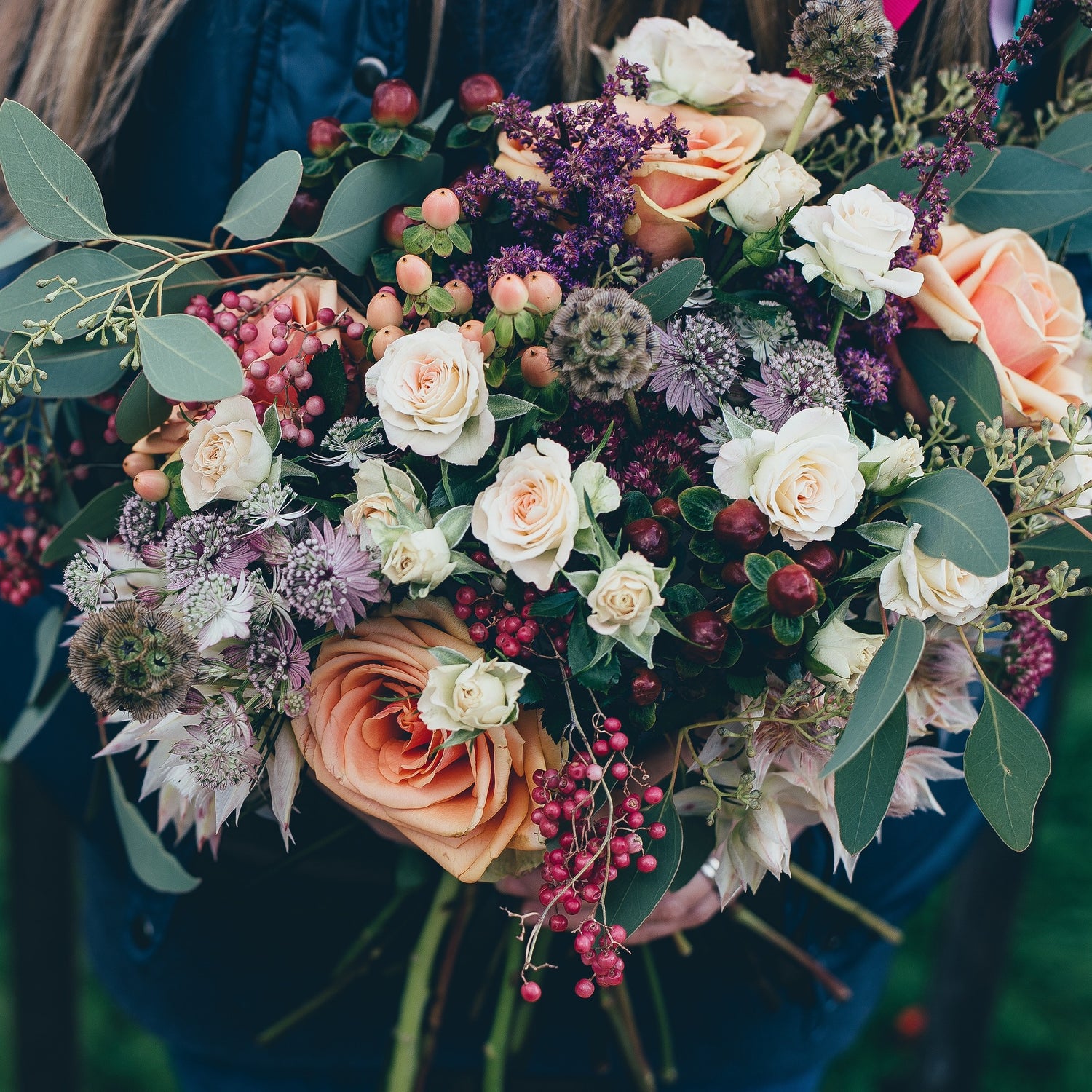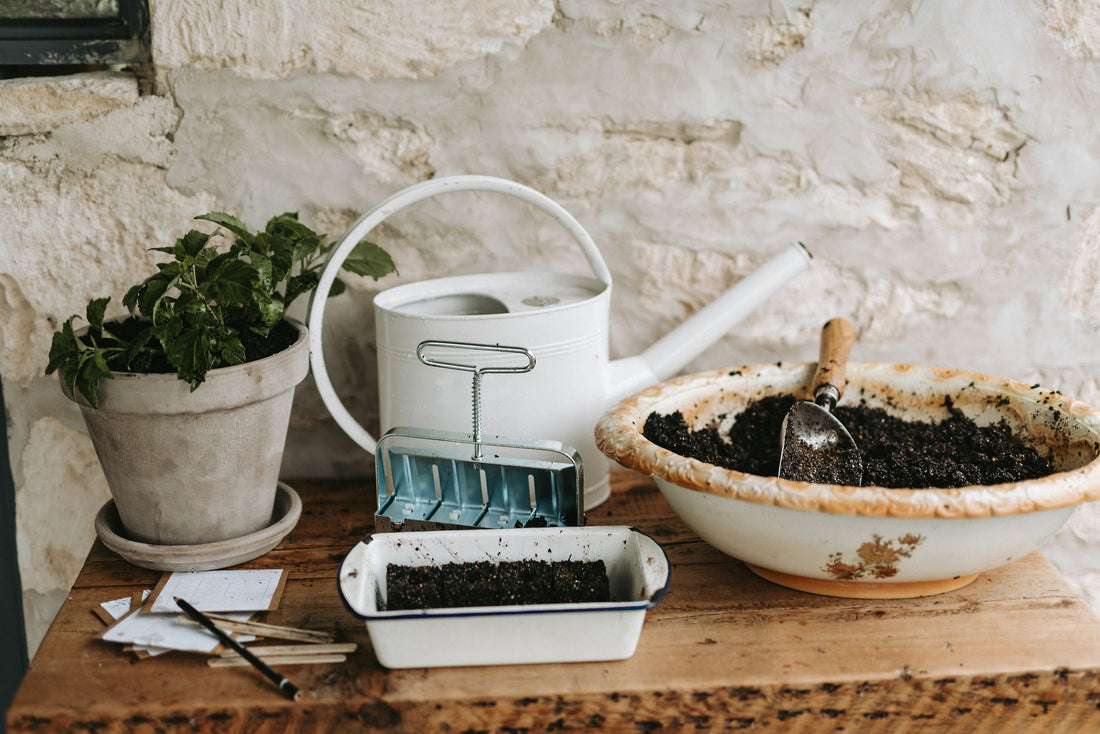There’s something so rewarding and pleasurable about cutting a flower you have grown from seed. Sure, there’s more work involved than buying plants from the nursery, but if producing amazing cut flowers is your goal, growing from seed is essential. Many of the plants available at garden centres are bedding varieties with stems too short for the vase. And you will rarely find the really wonderful colours and forms. Packets of seed are inexpensive and can be stored for some time in a sealed jar in a cool dry place, even in the fridge. Always sow more than you need as no grower achieves a 100 per cent germination rate.
If you’re new to growing from seed, start with annuals (plants that complete their growth cycle within a year) as these are the fastest to germinate and easiest to grow. There are two key factors to consider:
- When to sow. This will depend on your conditions.
- How to grow. Directly plant the seed in the garden, or sow under cover in a greenhouse or on a sunny windowsill?
Cold Climates
Most advice — in books, on seed packets and plant websites — focuses on late winter or early spring sowing. This advice has been written primarily for Northern Hemisphere gardeners, growing in places with very cold winters and heavy frosts.
Ideally, we want seedlings that are mature enough to be planted out but not so large they have become root-bound in their container. As regions with cold winters often have shorter growing seasons, sowing under cover before the last frost-free date, then planting out already established seedlings gives gardeners a head-start and hopefully more weeks of flowers before the arrival of autumn frosts.
Cold Hardy Annuals
These plants can survive cold winter temperatures. More seeds than previously understood can be sown in autumn. Many 'cold hardy annuals' have proved to be much tougher than originally thought. In USDA 7 or warmer they will generally survive in well drained ground over winter (provide additional protection such as frost cloth or caterpillar tunnels in really cold weather or below USDA 7). Cold hardy annual favourites:
- Cornflowers
- Scabiosa
- Snapdragons
- Sweet Peas
- Stock
- Clary Sage
- Iceland Poppies
- Love-in-a-Mist
- Bells of Ireland
- Calendula
- Larkspur
- Feverfew
- Queen Anne's Lace, or Ammi
- Chinese Forget me Not
- Orlaya
Warm Climates
In warmer climates and in places that are becoming warmer, there are different challenges when growing from seed. A powerful spring/summer sun can fry emergent seedlings in half an afternoon. Add a hot wind and they’re toast.
It’s often easier to sow seed in autumn when the sun is lower in the sky and autumn rains are hopefully regular, indeed autumn seed sowing can prove a game changer for many warm climate gardeners. Once summer temperatures have dropped but before the ground has cooled, sow seed. If your region is prone to frosts, count back from the first frost date (FFD) to ensure any plants you’re growing under cover are in the ground for at least a few weeks before this date.
The delicate balance between heat, rainfall and soil temperature will vary from place to place and from year to year. Sow seed sooner if autumn looks to be arriving early; wait a couple of weeks if the weather remains hot and dry. Wriggle your fingers into the soil. Warm, and damp? Perfect for planting.
If you’re unsure which approach is right for you, sow a batch in Autumn and plant into warm soil. If the plants don’t make it over winter, you can always resow in late winter or early spring and plant out after the danger of frost has passed.
Remember that autumn sown plants often stall over winter and put on little additional growth. But under the ground they will be establishing strong root systems ready to bounce into life in spring.
Where to Sow
While it’s tempting to scatter seed directly into the garden as suggested on the back of many seed packets, this can greatly diminish germination rates. Tiny seedlings are delicious to a wide variety of pests and can readily dry out before they’ve established a good root system. When sowing seeds under cover pests can be kept at bay and moisture levels more easily regulated. Your germination rates will increase.
As always there are exceptions to the rule:
- Sunflowers and Zinnias have large, carbohydrate-packed seeds. These germinate quickly and grow vigorously making them more able to tolerate pest damage and quickly put down roots. Easy and quick to grow, they are incredibly satisfying for the novice cut flower grower.
- Plants that hate having their roots disturbed when transferred from a seed tray into the ground. Phlox, or Daucus carota ‘Dara’ are best when direct sown.
- Some Plants need a period of winter cold to break dormancy and germinate (known as cold stratification). For example: Larkspur direct sown in autumn in cold climates will be cold stratified in the frozen ground over winter and ready to start growing in Spring.
Tip: If you live in a warm place without winter frosts, cold stratify your seeds in the fridge for a few weeks before sowing.
Sowing seed under cover
This is straight forward especially when you start with an easy to grow variety. Keep the potting mix moist but not waterlogged and after a week or two seedlings should emerge as if by magic.
These little plants require plenty of light otherwise risk becoming ‘leggy’ chasing the sun; you might need to experiment to find the perfect spot. Favourite easy growers include:
- Sweet Peas,
- Wallflowers,
- Cosmos,
- Strawflower/Paper Daisy,
- Statice
- Gomphrena (Globe Amaranthus).
Cut and Come Again
Look for ‘Cut and Come Again’ (CCA) varieties. These plants are popular with flower farmers because the more flowers cut or harvested, the more replacement flower stems grow. Cosmos, Zinnia, branching Sunflowers, Dahlias and Ranunculus are some of the best CCA plants and are brilliant for cutting. A single plant can provide countless vases of flowers.
Succession Sowing
Eventually though these amazing ‘cut and come again’ varieties tire, flowers become smaller and stems shorter. By sowing multiple batches of seeds, staggered over a few weeks, you can dramatically extend the flowering season.
CCA flowers especially good for succession sowing are those that are quick to grow:
- Cosmos
- Zinnia
- Sweet Peas*
- Snapdragons*
- Ammi
- Monarda 'Bergamo'*
- Rudbeckia Hirta*
- Dianthus*
- Sunflowers
- Scabiosa atropurpurea and stellata*
* These seeds are best started under cover
Watering
You may have seen evocative photos of vintage watering cans sprinkling dainty droplets above a tray of freshly germinated seedlings. Not a good idea. Seedlings are best watered from underneath by sitting the container in a pot or tray of water and allowing that water to soak up through the potting mix. Overhead watering spreads a disease called damping-off. The infected seedlings germinate but the stem tissue at the soil line rots, and the seedlings collapse. These are beyond salvaging. Start again after ensuring trays and equipment are well washed and disinfected to avoid infecting future crops.
Hardening Off
Before planting in the garden, gradually acclimatise the seedlings to outdoor conditions in a process called 'hardening off'. For about a week, sit the seedlings in a sheltered place for a few hours a day. Slowly increase the amount of time they are outside. Once they are tough enough to be permanently outside, into the garden bed they go.
Propagation Techniques for Trickier Varieties
Once you've had success with the easy varieties, you might want to try growing cut flowers that are a little more demanding including Echinops, Aquilegia and Echinacea. For successful germination of the tricker varieties, you’ll need to know:
- What’s the preferred temperature for germination?
- Do the seeds need light or darkness to germinate?
- What depth do the seeds need to be sown?
- Do the seeds originate from a cold climate? If so, they might need cold stratification.
- Is this an Australian or South African native seed requiring a smoke treatment?


